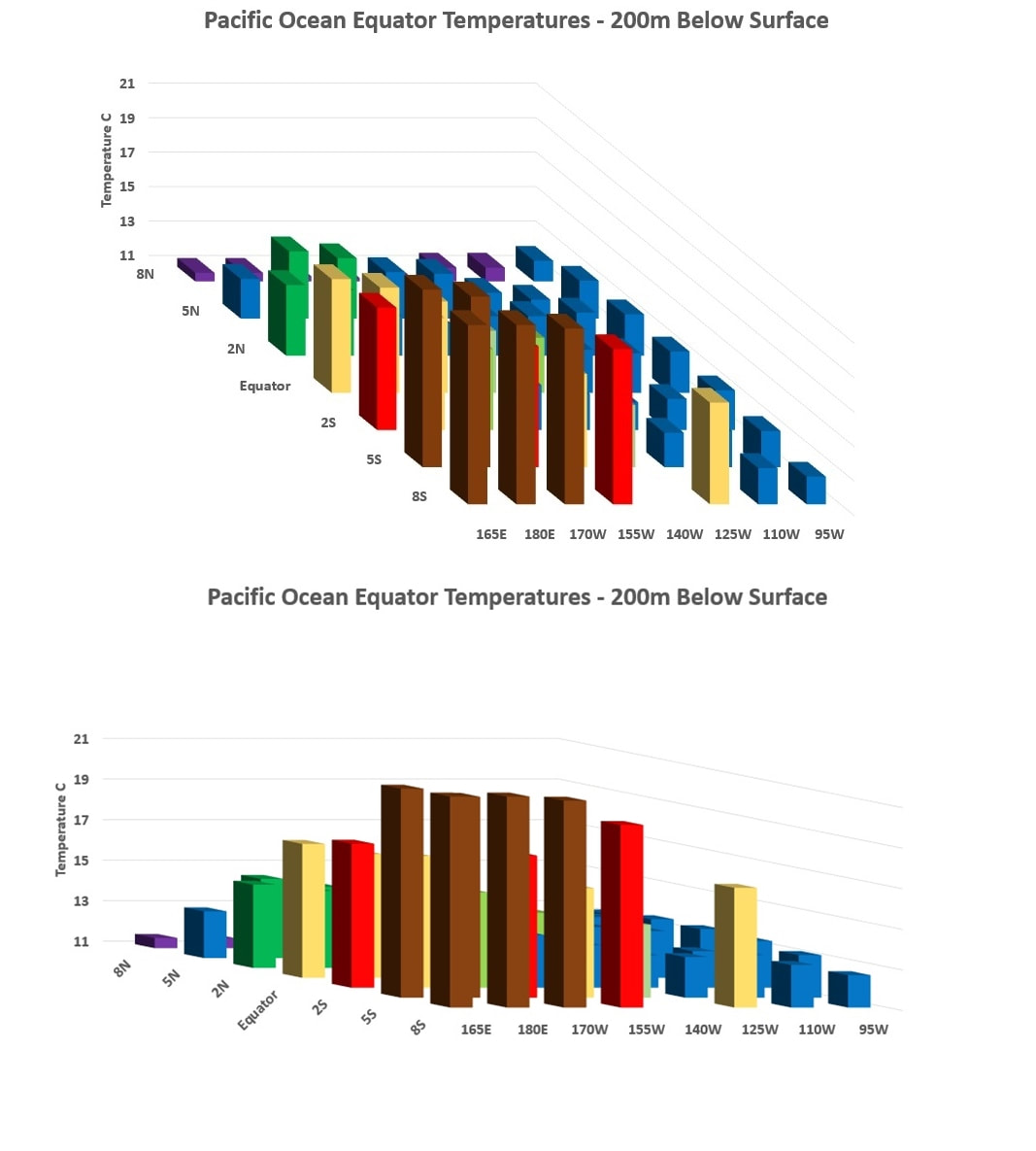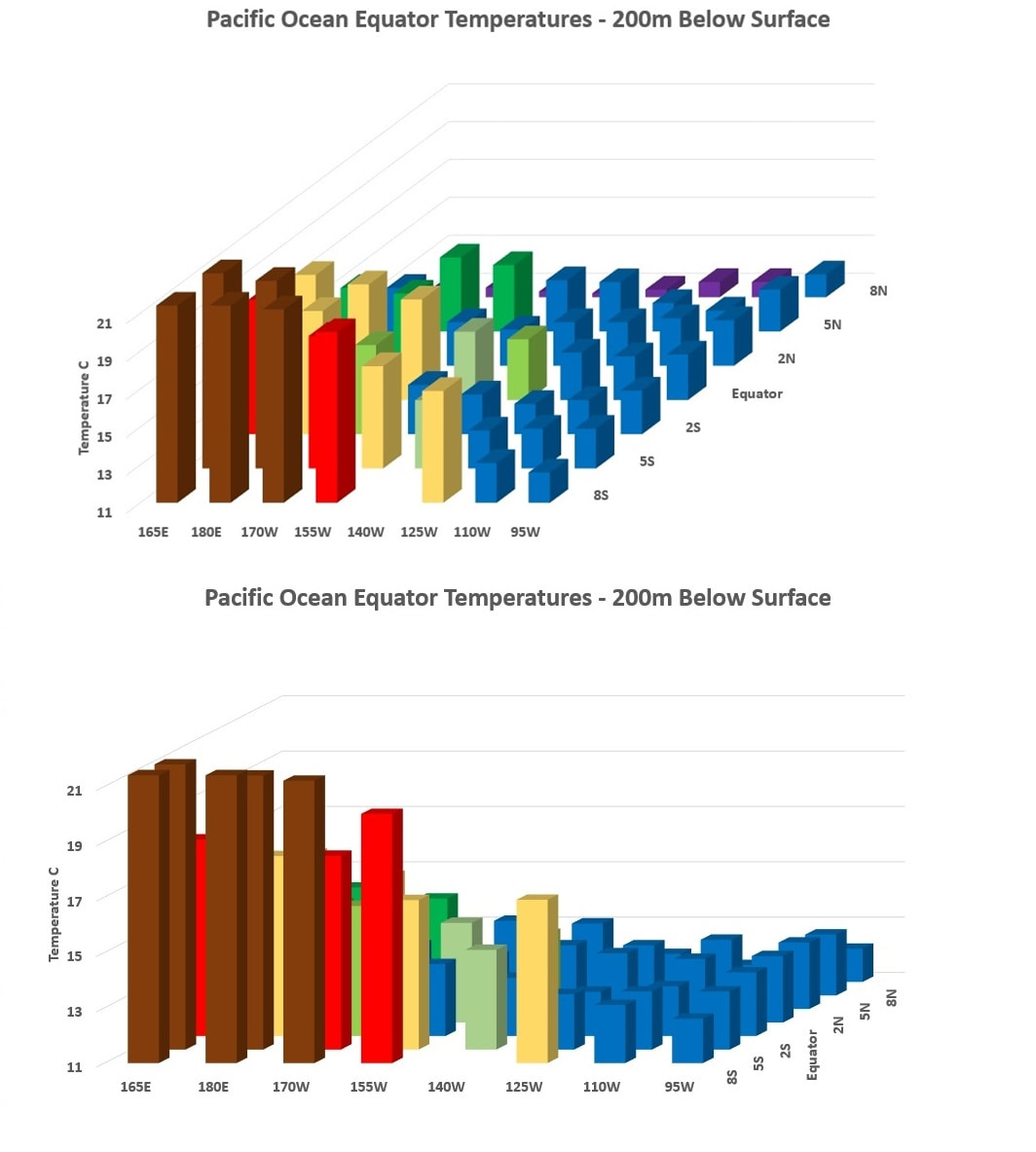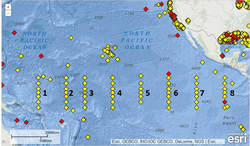
Across the Pacific there is a series of buoys that measure various meteorological measurements, including water temperatures down to 500 meters. All buoys measure at 100, 300, and 500 meters in depth, but buoys 1 through 4 measure a depth of 200 meters and 5 through 8 measure it at 180 meters. This variance will result in a slight increase in measurements at the 200 meter region in the following charts for buoys 5 through 8. The sea surface temperatures are measured at 1 meter beneath the buoy, and the air temperature varies between 3 and 4 meters above the surface. Annual sea surface temperatures always exceeded the average yearly air temperatures by 1 to 1.8C indicating that, even at sea, the heat flow is rising and warming the thermometer above the buoys with a measurable heat loss.
First analysis of this region revealed a variance in surface temperatures as we travel across the Pacific with the western Pacific being warmer than the East and flowing with the natural gravitational pull that moves our weather systems and tides. If the sun was the dominate factor of heat for our oceans, then we would expect to see near equal temperatures across this region, but ocean currents can also create surface oscillations.
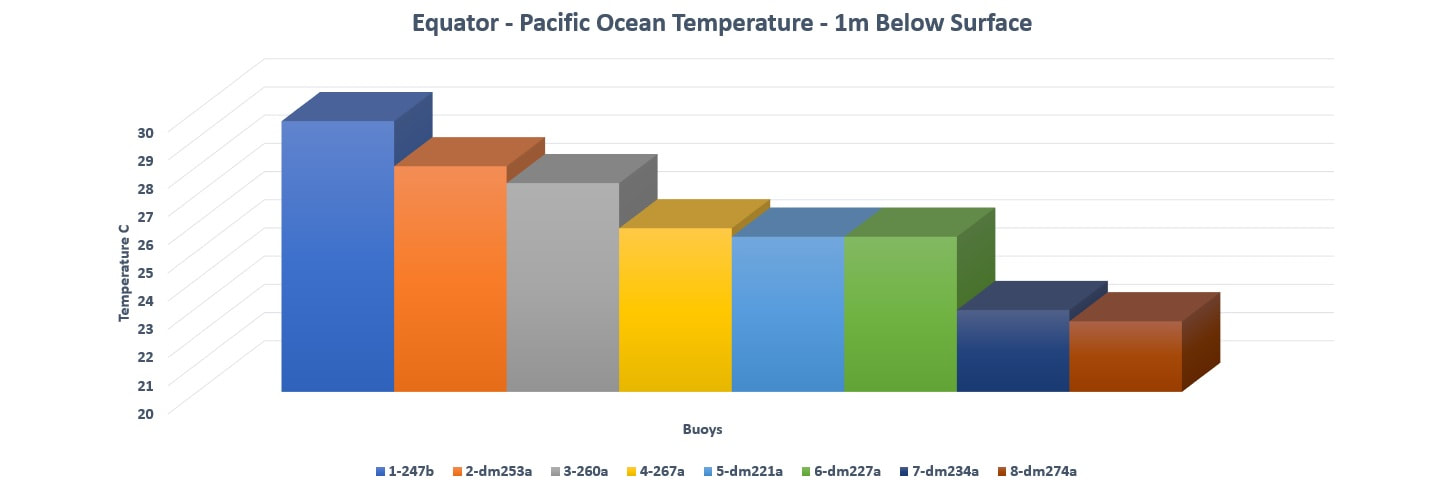
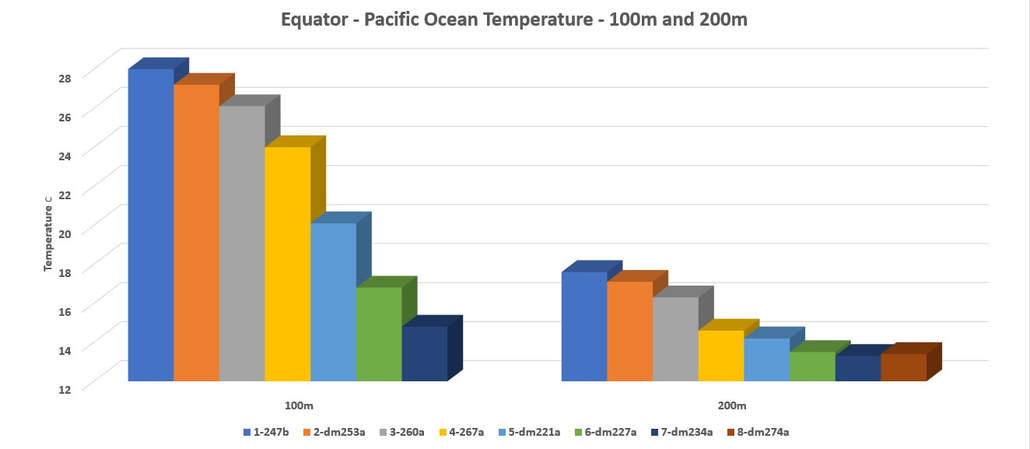
Researching the 100 and 200 meter depth we find an even larger deviations than the surface variance at 100 meters. Each region across the Pacific receives the exact same amount of solar energy indicating that this thermal mass being measured is from geothermal heat.
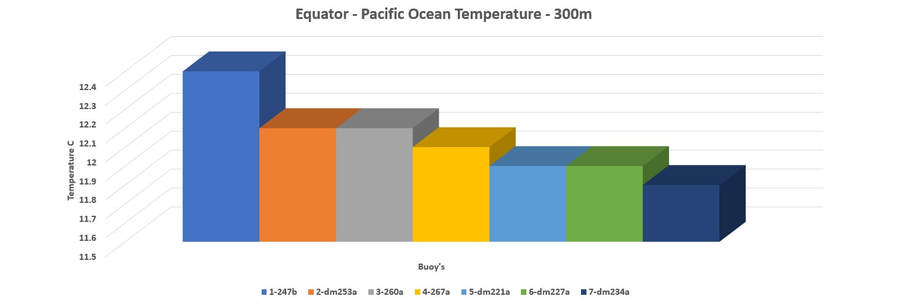
At 300 meters, as we descend beyond the influence of the solar energy, we see the variations continue but decline in amplitude.
By isolating each buoy along the equator at the 200 meter depth, the heat source for the Pacific becomes identifiable. The closer to the Australian plate, the warmer the waters become. This brings us to regions such as the Solomon and Mariana Islands, New Guinea and New Zealand. This region is known for their volcanic activity.
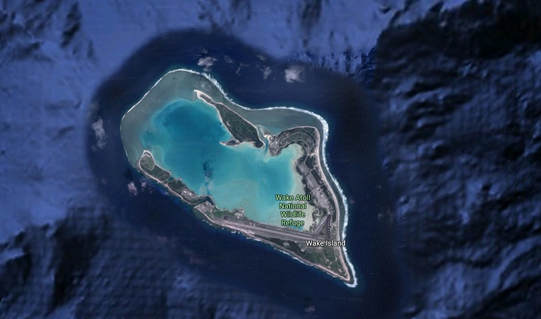
Islands in this region, such as Wake Island in this image, is an island that appeared and is actually the ridge that had built up over time and eventually protruded the surface. Volcanoes are vents and even inactive volcanoes such as these will naturally generate an increase in heat flow.
